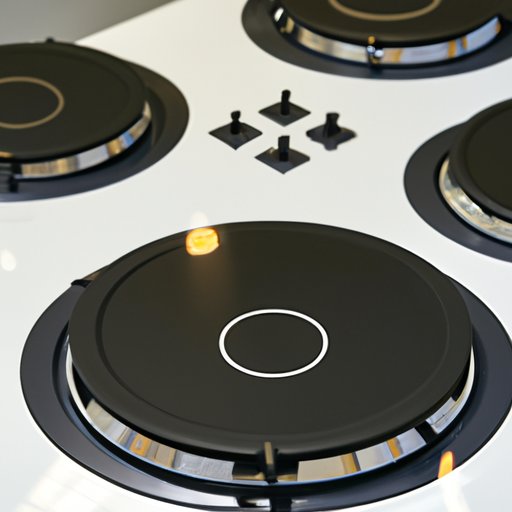Introduction
An induction stove is a type of electric stove that uses induction heating to cook food. This type of stove is becoming increasingly popular due to its efficient and safe heating capabilities. In this article, we will explore the science and technology behind induction stoves, breaking down their components and examining the advantages of using this type of stove.

Exploring the Science and Technology Behind Induction Stoves
Induction stoves work by creating an electromagnetic field that generates heat directly in the cookware, rather than on the surface of the stove. The cookware itself becomes the heating element, which allows for more precise control of the temperature and faster cooking times. According to Dr. David C. Smith, professor of electrical engineering at the University of Washington, “Induction cooking is much more efficient than other forms of cooking because the heat is generated directly in the cookware, not the stove top.”
The electromagnetic field created by the stove is generated by a coil of copper wire beneath the metal cooking surface. When an electrically conductive material, such as metal cookware, is placed on the cooking surface, it creates a circuit with the coil. This causes current to flow through the cookware, generating heat. The induction stove is able to adjust the amount of power going to the coil, allowing for precise temperature control.
Breaking Down the Components of an Induction Stove
The components of an induction stove are relatively simple. At the heart of the stove is the induction coil, which is made of copper wire. This coil is connected to a power supply, which is responsible for providing the electricity needed to generate the electromagnetic field. A control board regulates the power supply, allowing the user to adjust the temperature and other settings. Finally, a fan is used to cool the induction coil and keep the stove from overheating.
These components work together to create an efficient and safe heating system. The induction coil generates the electromagnetic field, which then heats the cookware. The power supply and control board allow the user to adjust the temperature and other settings, while the fan keeps the stove from overheating.

An Overview of the Advantages of Induction Cooking
Induction cooking has several advantages over traditional stovetops. For one, it is much faster than gas or electric stovetops. Because the heat is generated directly in the cookware, it takes less time for the food to reach the desired temperature. Additionally, induction cooking is more energy-efficient than other types of cooking, as the heat is not lost to the surrounding air like it is with gas or electric stovetops.
Induction cooking is also safer than other types of cooking. Because the heat is generated directly in the cookware, the risk of burns is greatly reduced. Additionally, the induction stove will shut off automatically if no cookware is detected, preventing accidents.
How to Use an Induction Stove for Maximum Efficiency
Using an induction stove requires some practice in order to get the most out of it. The key to efficiently using an induction stove is to quickly and accurately adjust the heat levels. One way to do this is to use the control panel to set the temperature, then use the “+” and “-” buttons to make small adjustments as necessary.
It is also important to use the right cookware when using an induction stove. The best cookware to use is flat-bottomed cookware made of cast iron, stainless steel, or aluminum. These materials are good conductors of heat and will ensure efficient cooking.

Safety Tips for Using an Induction Stove
As with any cooking appliance, there are certain safety precautions to take when using an induction stove. It’s important to always read the manufacturer’s instructions before using the stove, as improper use can be dangerous. Additionally, it’s important to keep the area around the stove clean and free of debris, as this can interfere with the induction process.
Proper maintenance and cleaning of an induction stove is also important for safety. Be sure to clean the stovetop after each use and periodically check the connections and wiring for signs of wear or damage. Additionally, it’s important to replace worn or damaged parts as soon as possible to avoid potential hazards.
Conclusion
Induction stoves offer many advantages over traditional stovetops, including faster cooking times, improved energy efficiency, and increased safety. By understanding how induction stoves work and following proper safety guidelines, you can get the most out of your induction stove and enjoy the benefits of this type of cooking.
(Note: Is this article not meeting your expectations? Do you have knowledge or insights to share? Unlock new opportunities and expand your reach by joining our authors team. Click Registration to join us and share your expertise with our readers.)
